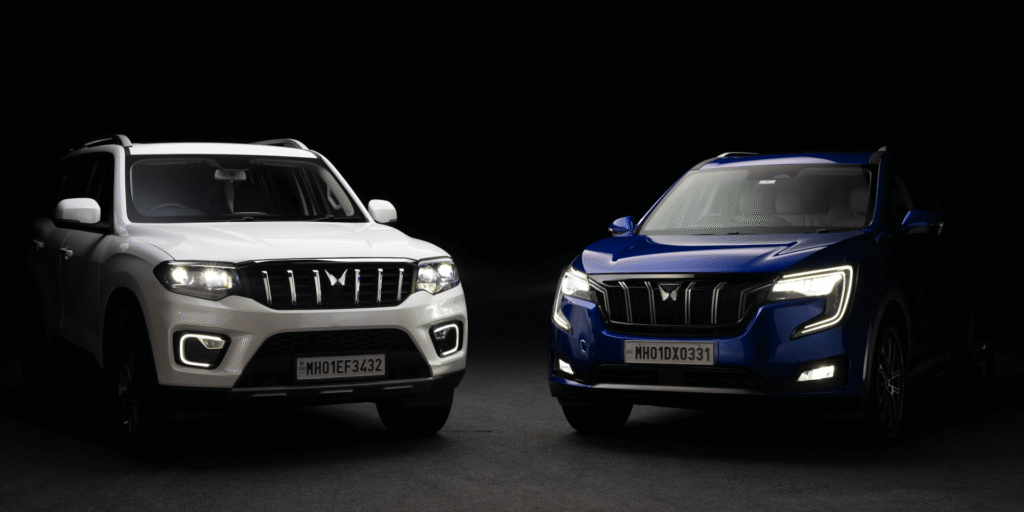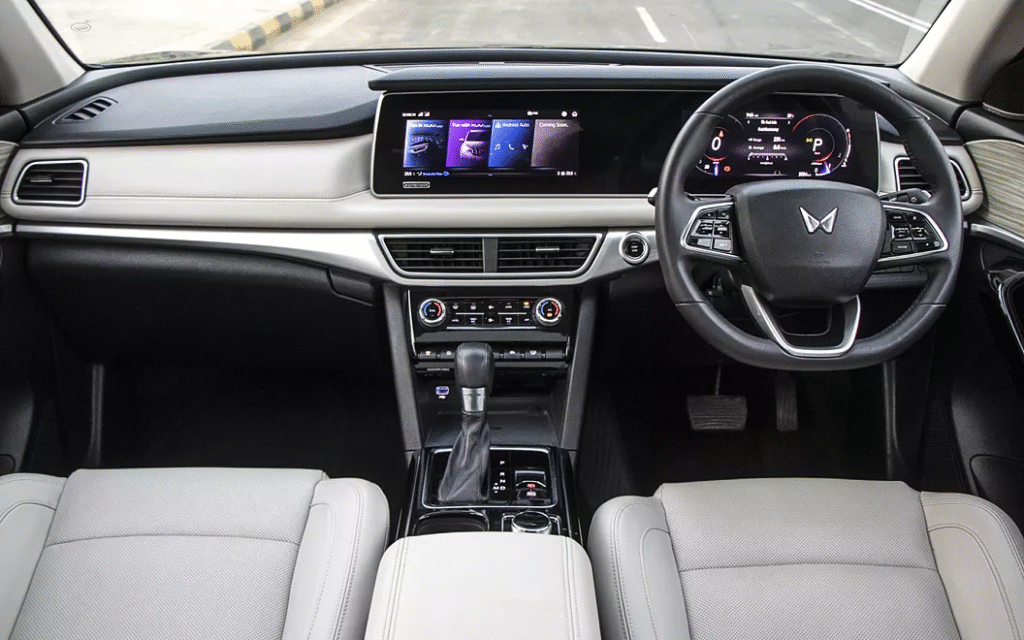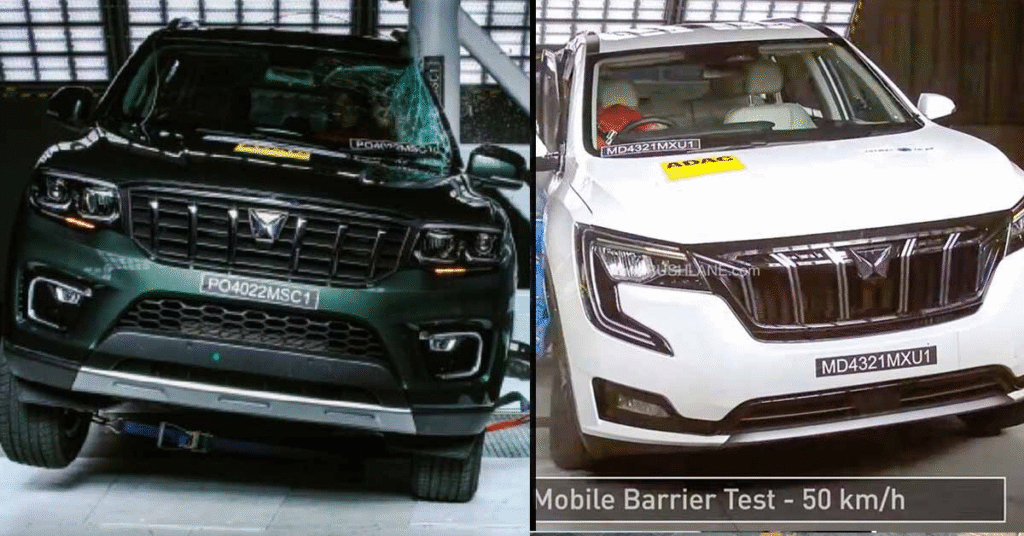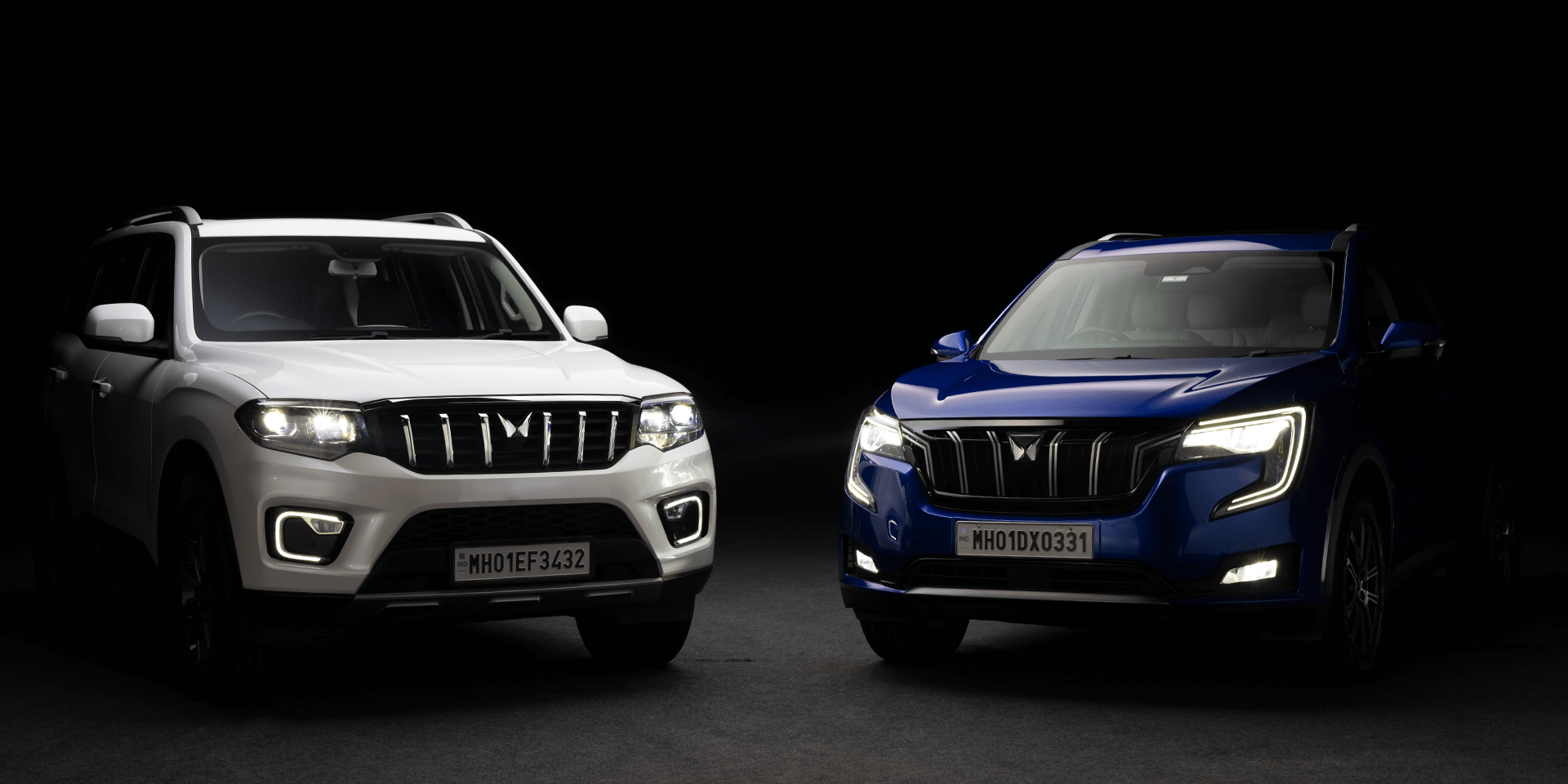
1. Platform & Build Quality
i) XUV700: Built on a monocoque chassis, offering a smoother, more composed ride and a more car-like handling experience—ideal for urban and highway driving.
ii) Scorpio‑N: Uses a ladder-frame (body-on-frame) chassis, designed for robust performance over rugged terrain, with impressive off-road durability and commanding presence.
2. Dimensions & Road Presence
i) Scorpio‑N is wider (by ~27 mm) and taller (by up to ~115 mm) than the XUV700, giving it a more imposing stance.
ii) XUV700 is slightly longer but feels more streamlined and modern in design.
3. Performance & Powertrain
i) XUV700: Diesel (2.2 L mHawk): ~155 bhp / 360 Nm (MT) and ~185 bhp / 420 Nm (AT)
Petrol (2.0 L TGDi): ~200 bhp and 380 Nm torque
ii) Scorpio‑N: Diesel: Lower tunes (~130 bhp) and higher (~172 bhp), with ~370 Nm torque & 400nm (AT)
Petrol: ~200 bhp / ~370 Nm(MT), 380nm(AT)
Both offer 6‑speed manual and automatic transmissions; Scorpio‑N offers 4WD (4XPLOR), while XUV700 has AWD in some diesel trims, better for mild conditions.
4. Ride Comfort & Off‑Road Capability
XUV700 delivers a more refined, sedan‑like ride, especially good on highways.
Scorpio‑N offers a more rugged, firm ride, better suited for uneven and rough terrain.
In off-roading, Scorpio‑N excels with better approach/departure angles, higher roof and width, and optional 4WD.
Image Credit: 91Wheels

5. Infotainment & Technology
XUV700: High-tech with dual 10.25‑inch screens, a fully digital instrument cluster, AdrenoX connected tech, Alexa, wireless Android Auto/Apple CarPlay, 360° cameras, and more.
Scorpio‑N: Simpler setup with an 8‑inch infotainment screen, semi‑digital cluster, front & rear parking sensors and camera, though still offering connected features and practicality.
Image Credit: CarTrade

6. Safety & Driver Assistance
Both hold a 5-star GNCAP rating, with standard safety features like airbags and ESC.
XUV700 offers Level‑2 ADAS —adaptive cruise control, lane‑keep assist, emergency braking, blind‑view monitor, etc.
Scorpio‑N includes essentials like hill‑hold/descent control, drowsiness detection, & ADAS.
Image Credit: Car Blog India

7. Cabin & Comfort
XUV700: More premium with softer seats, better third-row space, panoramic sunroof, dual-zone climate, ventilated front seats, and greater overall comfort.
Scorpio‑N: Functional and durable interior, ventilated front seats, offers 6- and 7‑seater layouts, captain seats in some variants, and higher, supportive seats—practical for rugged journeys.
8. Mileage & Fuel Efficiency
XUV700: Slightly better mileage overall—~14 km/l (petrol MT) & 9-10 km/l (petrol AT), ~18 km/l (diesel MT) & 15 km/l(diesel AT).
Scorpio‑N: Petrol (AT)~9 km/l & petrol (MT)~13 km/l. Diesel (AT)~12 km/l & diesel (MT)~15 km/l.
9. Pricing
Scorpio‑N starts lower, typically around ₹14–15 lakh (ex-showroom), making it more affordable at base and mid variants.
XUV700 begins around ₹14.5–15 lakh, but top trims can go up to ₹24–26 lakh, especially with ADAS and premium features.
| Criteria | Mahindra XUV700 | Mahindra Scorpio-N |
| Chassis | Monocoque – smooth on-road ride | Ladder-frame – rugged, off-road ready |
| Exterior Style | Sleek, modern crossover | Boxy, muscular SUV design |
| Tech & Features | Advanced ADAS, dual screens, luxury feel | Basic yet practical – with ADAS |
| Comfort (Cabin) | Deluxe seats, panoramic sunroof | Tough, supportive seats, 6-/7-seat flex |
| Off-Road Capability | AWD in select variants | 4WD option with superior angles |
| Power & Performance | Slightly more powerful diesel tuning | Good torque; sturdy feel |
| Pricing | Higher onwards | More affordable options |
10. Which Should You Choose?
Pick XUV700 if you’re seeking high-end comfort, modern tech, ADAS capabilities, and plush urban driving dynamics—even if it’s at a premium.
Pick Scorpio‑N if you value rugged build, off-road advantage, strong road presence, practicality, and a lower entry cost.
